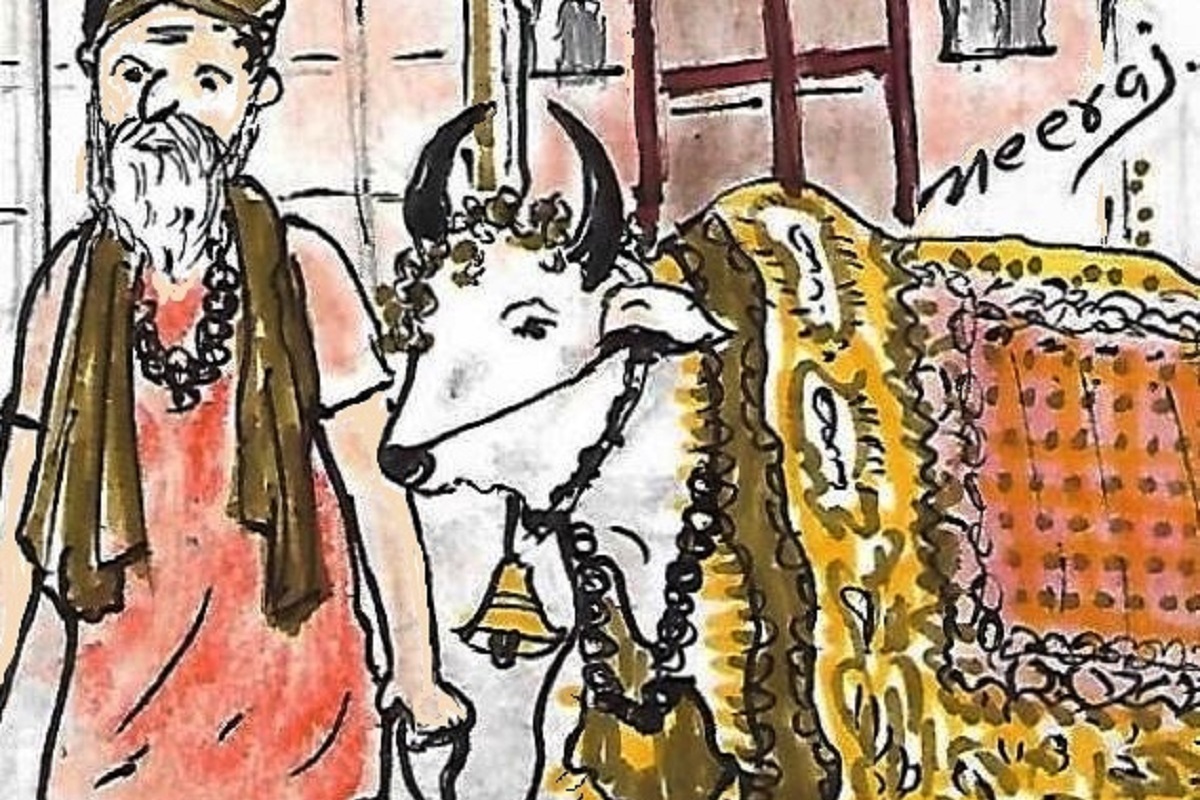The last 18 months have been very exasperating for Laxman, the roving mendicant and Raja, the fortune-telling ox and his constant companion. The much-dreaded pandemic has posed a permanent threat to their sole means of livelihood. In the pre-pandemic era, Laxman, draped in multi-ochre clothes and robes would saunter out of his makeshift tent home in a sprawling temple complex, with the sacred ox in tow.
Caparisoned with a gaudy coat and adorned with special jewellery, tinkling anklets and bells, Raja would faithfully follow his master. For Laxman and others of his ilk, the busy market places, religious congregations, fairs and exhibitions were the favoured visiting places. The sight of the mystic and his prophetic bull in colourful apparel would be an instant draw with the curious onlookers and the gaggle of sprightly children, vying with each other to have a feel of the sacred ox.
Their unwelcome antics would meet with a stern reprimand from the mendicant from time to time. In response to Laxman’s frequent intonations of ‘Bom Bhole’, a few curious onlookers would pose some questions. Sizing up the client, Laxman would command the bovine to offer his salutations. Politely shaking its head, the bull would bend its forelegs in supplication. The mendicant would then utter something inaudible whispers into the bull’s ears in a sing-song manner.
Advertisement
Trained to answer ‘yes’ or ‘no’ from the direction of its head nods, the response of the ox was a sight to behold. A shake of its head and horns both ways had a positive connotation, whereas a sideways nod signalled a ‘nay’. Depending upon the response, the client would make some offering, either in cash or in kind. Other onlookers would offer their obeisance to the divine Nandi by folding their hands and giving their humble offerings to Laxman, who would touch the donor’s forehead in benediction.
Navaratris, Dussehra, Ganeshotsav and other religious events heralded good times and the daily pickings in terms of offerings of food, fruits, clothes and cash were plentiful. Devout Hindus, especially the women, revere the ox as a symbol of Shiva and would offer their obeisance to Raja in large numbers. On some occasions, some foreigners passing by, would take a fancy to Raja and click attractive pictures of the bovine, making a handsome offering to the mendicant.
Covid-19 and the attendant paranoia has meant a total u-turn in Laxman’s fortune. His earnings have dwindled to a trickle, totally inadequate for his own sake and for the proper upkeep of his bovine companion. The uptick in the prices of essential bovine feed in these stressed times has further added to his agony. Raja’s dust-laden coat, bells and anklets smeared with dirt and his once stout body reduced to a bony frame tell their own sorry tale.
Laxman’s dishevelled and unkempt hair, sunken eyelids, slovenly appearance and haggard look present a sorry spectacle. With no immediate reprieve in sight, like others of his tribe, he may soon be compelled to dispose of his beloved ox and turn a daily wager himself, to eke out a living.
Tailpiece
Durga Pujas will not have food stalls this year also; spicy food sellers on rehri-patri can expect a windfall in the coming weeks!
(Contributed by: Deepak Razdan and Amit Banerjee)
Advertisement











